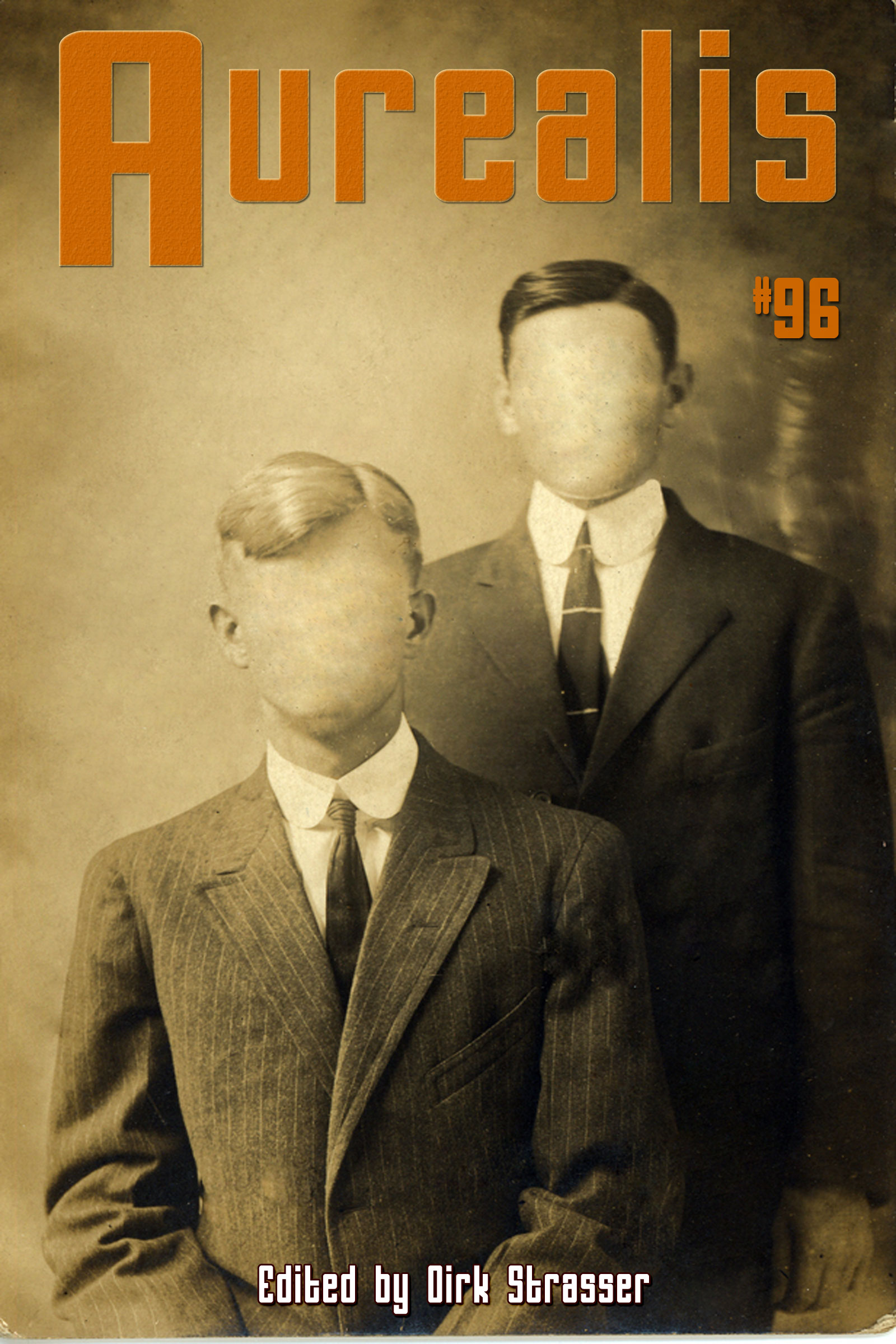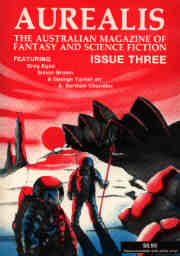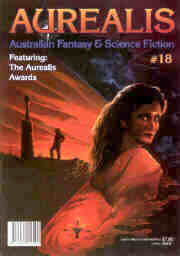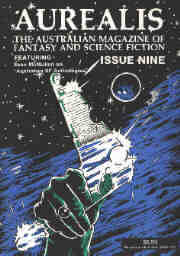Aurealis #96
$3.99
This issue features three stories that will live with you long after you’ve finished reading: Annika Howells’ ‘Obsidian River’, S G Larner’s ‘Searching for Cidalisa’ and Patrick Doerksen’s ‘Extracts from a Life of Science Fiction’.
- From the Cloud — Dirk Strasser
- Obsidian River — Annika Howells
- Searching for Cidalisa — S G Larner
- Extracts from a Life of Science Fiction — Patrick Doerksen
- Body Horror and the Horror Aesthetic — Claire Fitzpatrick
- Ice Queens and Snow Maidens — Sarah Fallon
- Secret History of Australia: Adeline Strife — Michael Pryor
- Aurealis Recommended Reading for 2016
- Reviews
In April 2013, a crime novel called The Cuckoo’s Calling by first-time author Robert Galbraith was published. It had done the rounds and been rejected by at least one publisher, and its initial print run was around 1500. In the first few months, it sold around 450 copies, and despite some reasonably favourable reviews, was at risk of being remaindered. It was revealed mid-June that the author was, in fact, Harry Potter author, J K Rowling, who a few years earlier had been declared the world’s richest self-made woman with a net worth of a billion dollars. What happened next illuminates much about how the publishing industry and the world in general works.
The book immediately became the best-selling novel on Amazon, and reviews ranged from positive to glowing. USA Today wrote “The Cuckoo’s Calling shows that all great fiction… has its own kind of magic.” It won the 2013 Los Angeles Times Book Prize for best Mystery/Thriller. In 2014 it was announced that the novel and its sequels would be adapted as a television series for BBC One. A second book in the series, The Silkworm was published in 2014 and a third, Career of Evil, followed in 2015. In October 2016, it was announced that HBO has come on-board as the US partner for the BBC One series.
Nobel Prize Award-winning science fiction author, Doris Lessing, once undertook an experiment that confirmed her worst fears that publishers and reviewers are influenced by the name attached to the work to the detriment of the work itself. To highlight the difficulties faced by unknown writers, she submitted a manuscript, The Diary of a Good Neighbour, under the name Jane Somers.
Her novel The Golden Notebook had sold almost a million copies in hardback and won the Prix Medicis Foreign Award, and her series The Children of Violence also sold almost one million books. The Diary of a Good Neighbour, however, sold around 1500 copies in the UK and 3000 in the US, and had almost no reviews—until it was revealed that the author was actually Doris Lessing.
So, what’s going on here? Why the massive disparity in terms of success between well-known names and unknown names, even when it’s the same person? This phenomenon—where being perceived to be the best at something, even slightly, triggers huge advantages—is called the Superstar Effect. The term was first coined by Sherwin Rosen in the American Economics Review, where he explained the mathematics behind the reason why superstars like J K Rowling reap so many more rewards than peers who are, if anything, only slightly less talented. It applies equally to CEOs, sports people and popstars as it does to writers.
Remember, though, that unless we’re talking about something as clear cut as a 100 metre sprint, the concept of “best” is fraught with subjectivity. Aren’t superstars really the result of a mixture of natural talent, perseverance, and chance? Winning a literary award, for example, can make an enormous difference to a writer’s career, and the win/lose format of these awards can make the difference between superstar and also-ran come down to a hair’s breadth.
Maybe some of you are a lot closer to superstardom than you think.
All the best from the cloud.
Dirk Strasser
From Obsidian River by Annika Howells:
An endless road unfurls before me, a ribbon of black bitumen and white lines. Beyond the headlights of my car there is pure, suffocating darkness. Even the sky appears empty, starless, shrouded in a blanket of cloud.
From Searching for Cidalisa by S G Larner:
In my dreams, I searched the databases. Input search query, examine results, refine search query. Fields, proximity operators, even the antiquated Boolean queries–I tried every combination I could think of, all night, until I woke in the morning in a haze of exhaustion, eyes glued together, mind overloaded.
From Extracts from a Life of Science Fiction by Patrick Doerksen:
His parents are so afraid that he too, becomes afraid, though he had started off feeling only wonder. A scientist comes up with the term Exochthon, and that’s the word all the news people use.
From Body Horror and the Horror Aesthetic by Claire Fitzpatrick:
Mutations and metamorphosis, graphic violations of the human body, body horror is a genre that transcends pure fear and manifests in a physical form. Body horror—which describes creations deemed ‘outside of nature’—is seen as some hideous deformity.
From Ice Queens and Snow Maidens by Sarah Fallon:
Female representations of winter have presided in folklore across the globe from Russia to Japan. Hans Christian Anderson’s The Snow Queen, first published in 1844, features on of the most well-known of these winter women, the Snow Queen herself. While largely absent from her own story, she has inspired many reimaginings, from Narnia’s White Witch to Frozen’s Elsa.
From Secret History of Australia: Adeline Strife by Michael Pryor:
Felicity Paraparap was Australia’s only internationally accredited politician hunter. In this highly specialised field, Felicity Paraparap was renowned for her stealth, cunning and humane ‘returning them to the wild’ philosophy—an attitude that was derided at the time, but is now considered standard practice.
